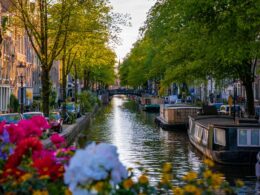Van Gogh is often seen as one of the greatest painters in history. People all over the world admire and love his work. Experts praise his amazing use of color, which they say is unlike any other artist’s. Even though he went through a lot of personal pain, he was able to turn that pain into powerful and beautiful art. While many artists express sadness in their work, Van Gogh also used his passion to show the beauty and joy in the world around him.
Here, I’ve put together a list of my ten favorite Van Gogh paintings from the Van Gogh Museum. These artworks give us a deep look into human feelings, the beauty of nature, and Van Gogh’s own struggles.
It is good to love many things, for therein lies the true strength, and whosoever loves much performs much, and can accomplish much, and what is done in love is well done.
~ Vincent Van Gogh
The Potato Eaters
Van Gogh wanted The Potato Eaters to show off his ability to paint people. He chose a difficult scene on purpose to prove how much he had improved. The painting shows the tough life of farmers, with their rough faces and worn hands.
His main message was that these people had worked hard for their food, they had grown it themselves and were now eating the results of their own labour.
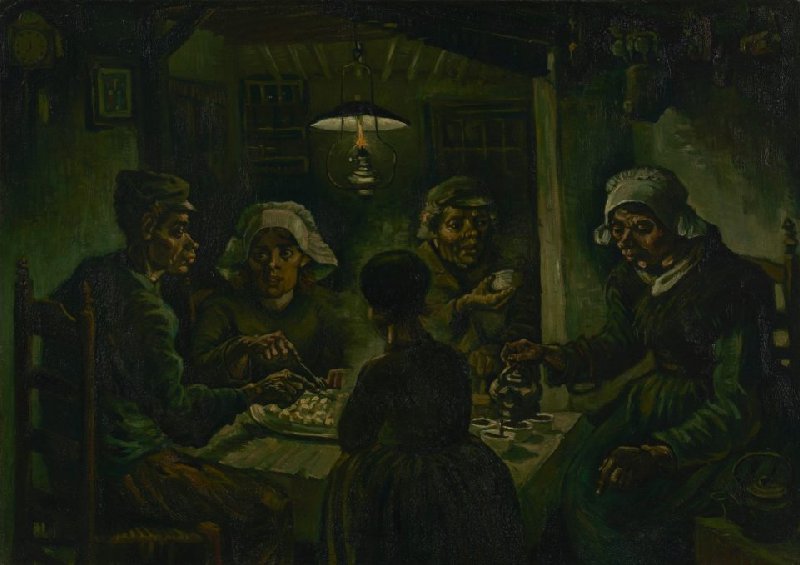
I find Van Gogh’s The Potato Eaters really powerful. It shows the tough lives of hardworking farmers in a simple but honest way.
Their rough hands and tired faces, lit by the soft light of one lamp, make me feel both sad and full of respect.
It’s like Van Gogh is asking us to look closely at their lives and admire their strength and hard work without dressing it up.
I dream my painting, and then I paint my dream.
~ Vincent Van Gogh
Wheatfield with Crows
Many people think Wheatfield with Crows was Van Gogh’s final painting, but that’s not true. He actually made several more artworks after this one. Some see the dark sky, the crows, and the path that goes nowhere as signs that he knew his death was near, but that might not have been what he meant.
Van Gogh wanted his wheatfield paintings to express deep sadness and loneliness, but also to show the beauty and strength of the countryside.
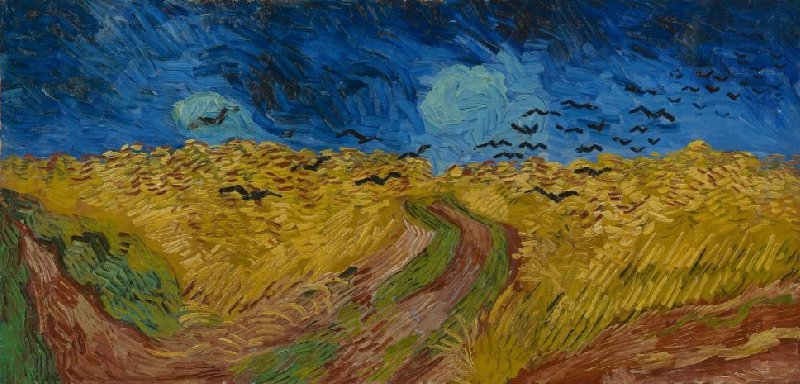
Van Gogh’s Wheatfield with Crows really affects me emotionally. The strong contrast between the bright yellow wheat and the dark, stormy sky reminds me of how life is full of both happiness and sadness.
The flying crows seem to show chaos or trouble, but at the same time, the wide open field gives off a feeling of calm.
If you hear a voice within you say ‘you cannot paint,’ then by all means paint, and that voice will be silenced.
~ Vincent Van Gogh
Sunflowers
Vincent Van Gogh’s Sunflowers paintings are some of his most famous pieces. He painted them while he was living in Arles, a town in the south of France, between 1888 and 1889.
He made five large paintings of sunflowers in a vase, using only three different shades of yellow. This showed that it’s possible to create a bold and powerful image using just one colour in different tones, without losing any feeling or meaning.
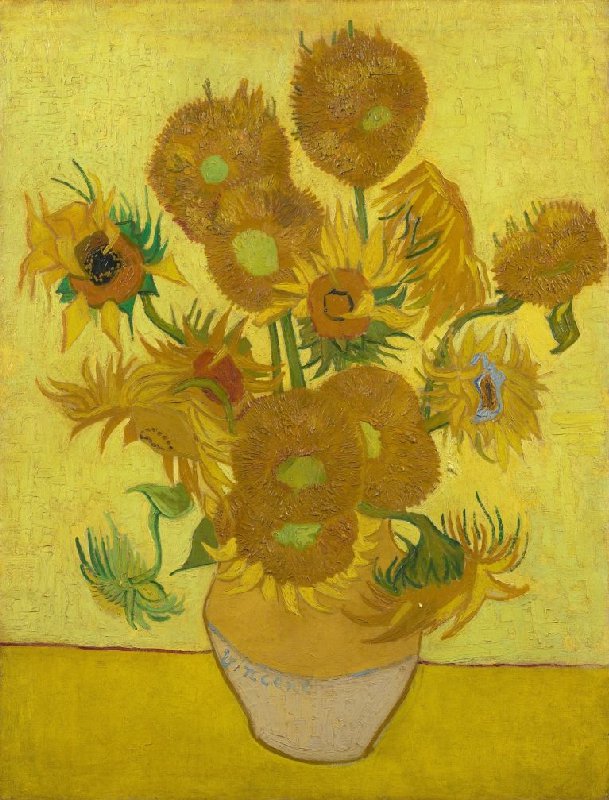
Whenever I look at Van Gogh’s Sunflowers, I feel warm and happy. The bright yellow and golden colors make me think of a sunny summer day, full of energy and beauty. The sunflowers stand tall in the vase, bringing a sense of peace and cheerfulness.
The painting feels like a symbol of hope, strength, and the small, simple things in life that make us happy. Van Gogh had a gift for turning everyday things into something special, and every time I see this painting, I feel amazed and filled with joy.
Great things are done by a series of small things brought together.
~ Vincent Van Gogh
Self Portrait (Grey Felt Hat)
Van Gogh painted this self-portrait in the winter of 1887–1888, after living in Paris for almost two years. During that time, he studied a painting style called Pointillism and gave it his own twist. He used short brushstrokes in different directions to create a soft, glowing effect around his head.
The painting also shows how bold Van Gogh had become with color during his time in Paris. He used colors that contrast with each other, like blue and orange in the background, and red and green in his beard and eyes; along with long, expressive brushstrokes.
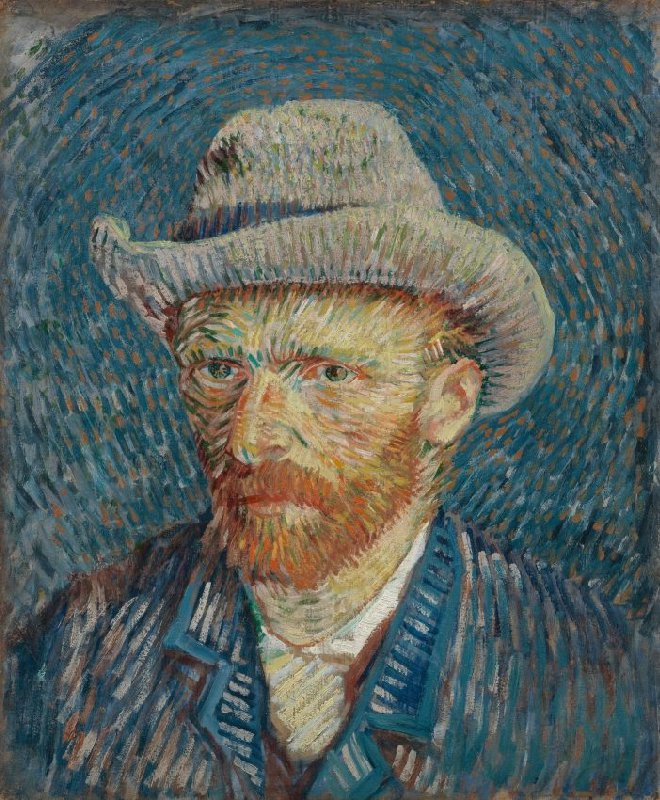
When I look at Van Gogh’s Self-Portrait with Grey Felt Hat, I feel like I’m connecting directly with him. His intense eyes, the swirling colors, and the confident brushwork all come together to show his strong personality and deep emotions.
To me, the painting feels like a glimpse into Van Gogh’s life, an invitation to see his struggles and admire how he kept going. It’s almost like meeting him face-to-face, which makes the whole experience feel personal and deeply meaningful.
I am seeking, I am striving, I am in it with all my heart.
~ Vincent Van Gogh
Almond Blossom
Van Gogh loved painting large branches of blossoms against a blue sky, and you can see that clearly in his almond tree paintings. Inspired by Japanese prints, he used strong outlines and placed the tree front and center in the painting.
He created this artwork as a present for his brother Theo, to celebrate the birth of Theo’s son, Vincent Willem. This painting became very meaningful to the Van Gogh family, and later, Vincent Willem would go on to start the Van Gogh Museum.
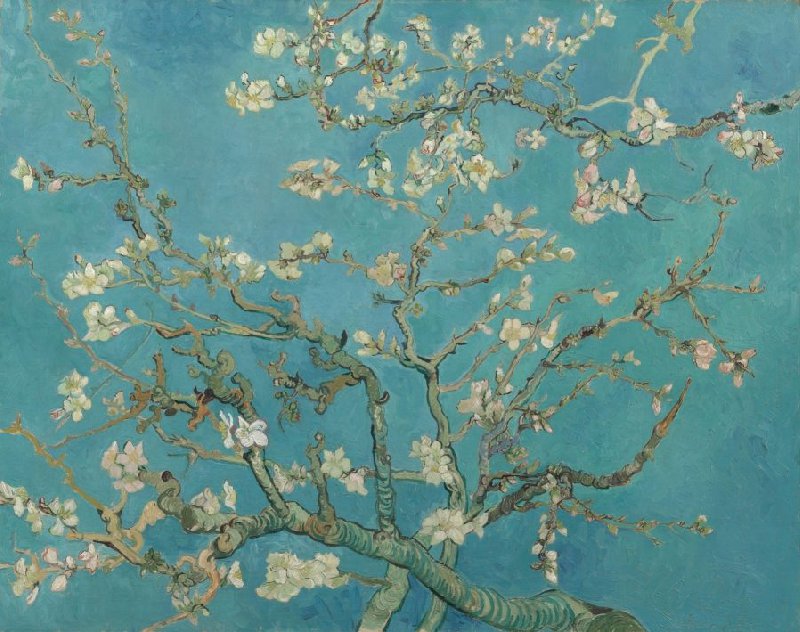
Van Gogh’s Almond Blossom gives off a peaceful and uplifting feeling. The delicate flower buds set against the clear blue sky stand for new life, hope, and the beautiful cycles of nature.
Every time I see it, I feel like I’m in the middle of a calm spring day. It brings me a quiet sense of peace and reminds me that nature always finds a way to start fresh, which fills me with hope.
This painting is Van Gogh’s way of honoring the power of life. It’s a tribute to nature’s gentle beauty that somehow feels both fragile and everlasting.
There is nothing more truly artistic than to love people.
~ Vincent Van Gogh
The Bedroom
Van Gogh’s The Bedroom is a calm and simple painting of his room in Arles. Over the years, the bright colours have faded, so what used to be purple walls now look blue. The odd angle of the back wall wasn’t a mistake, Van Gogh chose to paint it that way on purpose. He also flattened the perspective to make it look more like a Japanese print, which he admired.
Van Gogh cared deeply about this painting and felt most pleased with it when he looked back on his work after being unwell.
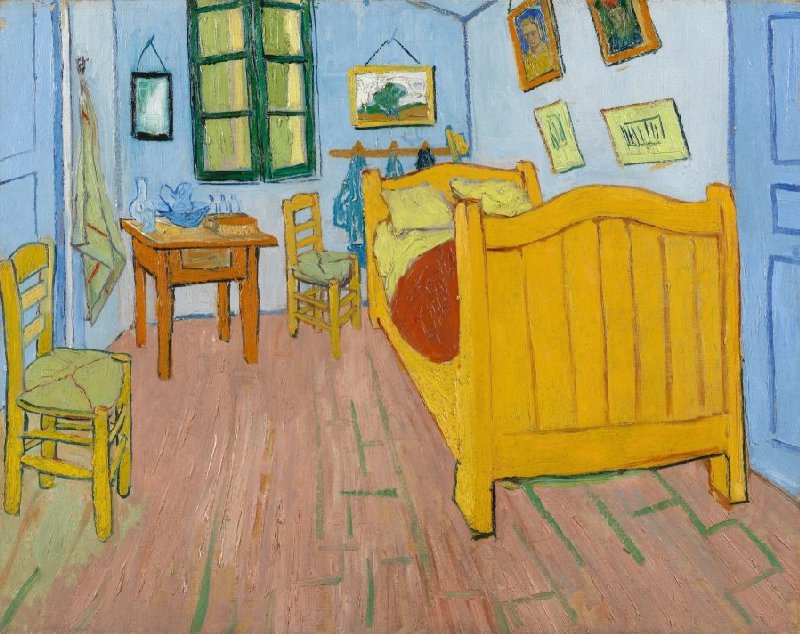
The Bedroom pulls me in with its cozy colours and the familiar feel of a lived-in space. It seems like a quiet retreat—a small world filled with personal items and a sense of calm.
But at the same time, the unusual angles and bold colours suggest there’s more going on emotionally. I start to wonder if Van Gogh was feeling lonely or longing for comfort. Looking at the painting feels like reading a page from his private journal, offering a rare look into the space where he felt safe.
This painting makes me feel close to Van Gogh, as if I understand him a little more. It also shows how even simple, everyday places can hold deep emotional meaning.
I put my heart and soul into my work, and I have lost my mind in the process.
~ Vincent Van Gogh
Self-Portrait with Pipe
While he was living in Paris, Vincent Van Gogh painted more than 20 self-portraits, each one showing something different through its style, colour, and form. These portraits were his way of trying out different ways to paint people.
During this time, Van Gogh discovered the work of Adolphe Monticelli, a well-known French painter who used bright colours and thick layers of paint. Van Gogh really admired Monticelli’s style and started using some of his techniques in his own self-portraits.

He played with light and colour by painting his face in soft, pale shades and setting it against a deep red background, making the contrast stand out.
Van Gogh’s Self-Portrait with Pipe gives off a quiet, thoughtful mood. The gentle colours and his steady, serious gaze create a moment that feels both personal and a little sad. It’s a touching reminder of how valuable it is to take time to look inward and reflect on ourselves.
Normality is a paved road: It’s comfortable to walk, but no flowers grow on it.
~ Vincent Van Gogh
Irises
Van Gogh painted Irises while he was staying in a mental hospital in Saint-Rémy. He wanted to explore how colours could work together, so he used strong colour contrasts in this still life painting.
He placed the purple irises against a yellow background to make them stand out more. Interestingly, the flowers were originally painted purple, but over time the red in the paint faded, and now they appear blue.
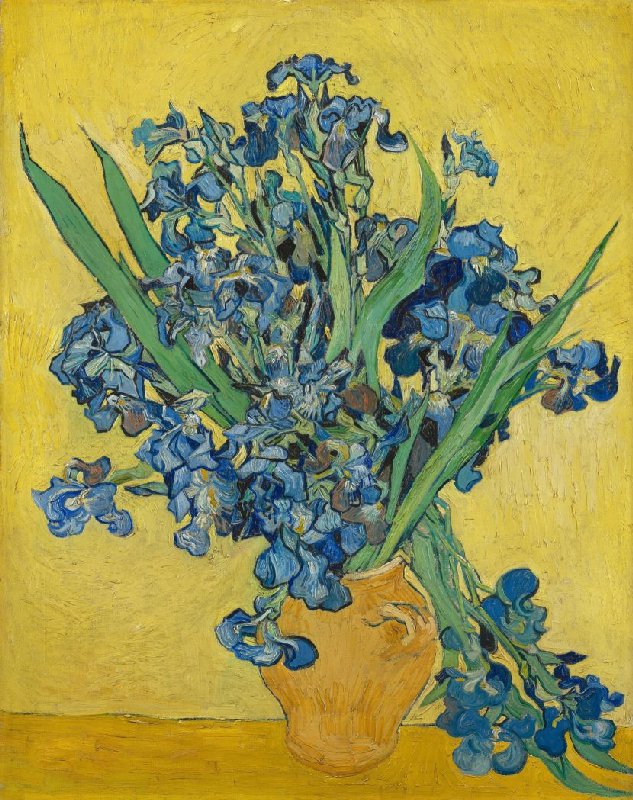
Vincent van Gogh – Irises
Van Gogh’s Irises is a beautiful painting that makes me feel happy. The mix of blues, greens, and the one white iris come together in a way that feels special and unique.
The flowers seem to be gently moving in the wind, giving the whole scene a feeling of life and motion. Looking at it makes me feel like I’ve stepped into a magical, blooming garden. Even though Van Gogh painted this while he was in an asylum, the artwork still fills me with awe at how beautiful nature can be.
This painting shows how Van Gogh could find brightness and beauty, even during some of his darkest times.
I don’t know anything with certainty, but seeing the stars makes me dream.
~ Vincent Van Gogh
The Yellow House (The Street)
In May 1888, Van Gogh moved into a house at Place Lamartine in Arles, Southern France. The green shutters in his painting show this house. After settling into what he called the “Yellow House,” he wrote to his brother Theo about the bright yellow buildings shining in the sun and the clear blue sky above.
Van Gogh named the painting The Street and showed the area around him, including a favorite restaurant and the home of his friend Joseph Roulin. The Yellow House wasn’t just where Van Gogh lived, it was a place where he dreamed artists could come together to live and work as a community.
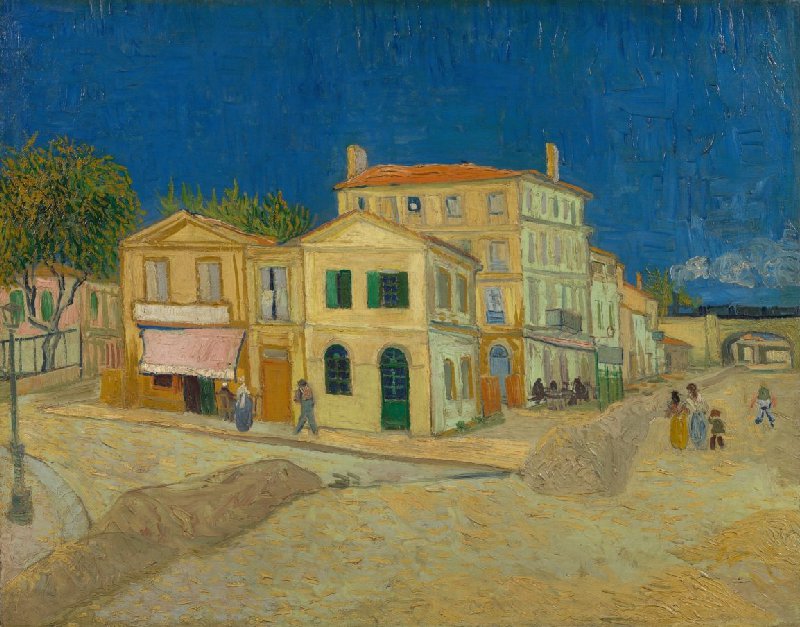
Van Gogh’s The Yellow House (The Street) attracts me with its warm colors and cozy feel. The bright houses against the clear blue sky give me a feeling of peace and calm.
It feels like a sunny afternoon in a friendly neighborhood, making me want to step inside and be part of this calm world.
Knowing this was Van Gogh’s home, where he hoped to build a place for artists to live and create together, makes the painting even more special. It’s not just a picture, it’s a colorful dream, reminding me how important it is to have a place where you belong and to share creative goals with others.
The sight of stars makes me dream.
~ Vincent Van Gogh
Wheatfield under Thunderclouds
In the last weeks of his life, Van Gogh made many amazing paintings showing the wheatfields of Auvers. One of these paintings is a striking picture of a wide field under a stormy sky. Through these scenes, Van Gogh shared his feelings of sadness and deep loneliness, but also the hope and comfort he found in nature.
In a letter to his brother Theo, Van Gogh said he hoped these paintings would show the healthy and strong side of the countryside, things that words couldn’t fully explain.
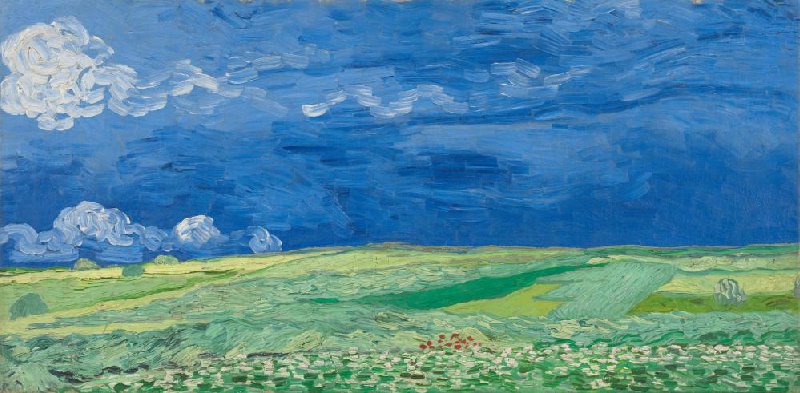
Van Gogh’s Wheatfield under Thunderclouds makes me feel calm but serious inside. The huge wheat field stretching under the heavy, dark sky shows a quiet kind of beauty. It feels like being alone but still strong when facing nature’s power.
Even with the storm hanging overhead, the golden wheat gives off a lasting feeling of hope and strength.
It’s like Van Gogh is telling us that even in our loneliest and hardest times, there is still beauty and courage to be found, something that really touches me.
What would life be if we had no courage to attempt anything?
~ Vincent Van Gogh
To find out more how to visit the Van Gogh Museum, please see the following post.
The Van Gogh Museum in Amsterdam
The beginning is perhaps more difficult than anything else, but keep heart, it will turn out all right.
~Vincent van Gogh







